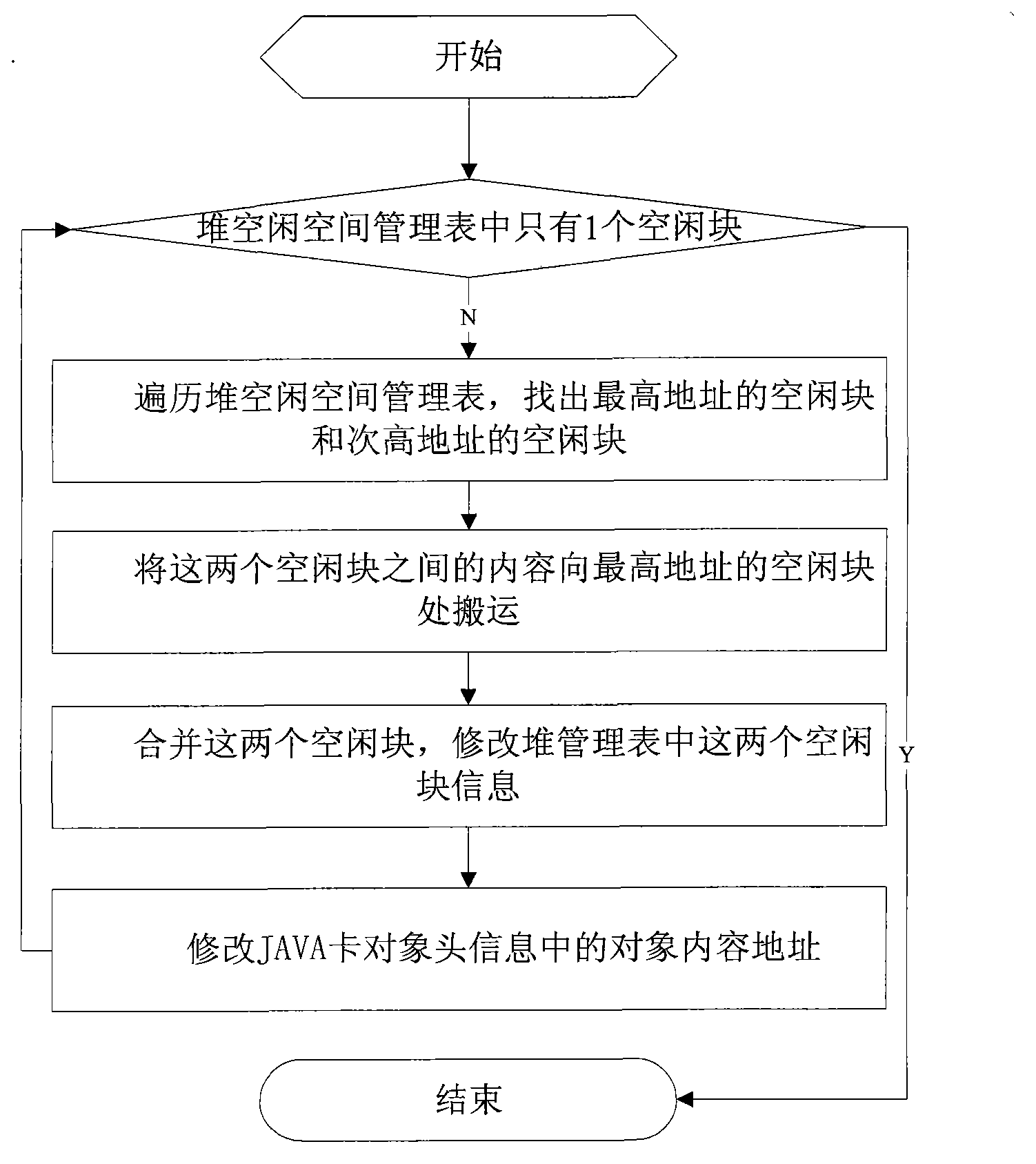Method for JAVA card system heap fragment disposal
A technology of defragmentation and heap space, which is applied in the field of smart cards, can solve problems such as reducing the efficiency of system space usage, and achieve the effect of reasonable application
- Summary
- Abstract
- Description
- Claims
- Application Information
AI Technical Summary
Problems solved by technology
Method used
Image
Examples
Embodiment Construction
[0023] 1. Traversing the heap space management table, find out the free block with the highest address and the second highest address (concentrate the object domain to the high address).
[0024] 2. Record the moving start flag movFlg (system data of EEPROM);
[0025] 3. Determine the scope of transportation and carry it.
[0026] a)
[0027] If the address range of the highest free block block1 is [empty_addr_L, empty_addr_H],
[0028] The address range of the next highest free block block2 is [empty_addr_l, empty_addr_h]
[0029] The highest address of the moved block move_addr_h=empty_addr_L-1
[0030] The lowest address of the block to be moved is move_addr_l=empty_addr_h-1.
[0031]
[0032] b) Compare the size of the highest address free block and the handling block
[0033] The size of the moving block is less than or equal to the size of the highest address free block: write the moving block directly to the highest address free block.
[0034] If the size of t...
PUM
 Login to View More
Login to View More Abstract
Description
Claims
Application Information
 Login to View More
Login to View More - R&D Engineer
- R&D Manager
- IP Professional
- Industry Leading Data Capabilities
- Powerful AI technology
- Patent DNA Extraction
Browse by: Latest US Patents, China's latest patents, Technical Efficacy Thesaurus, Application Domain, Technology Topic, Popular Technical Reports.
© 2024 PatSnap. All rights reserved.Legal|Privacy policy|Modern Slavery Act Transparency Statement|Sitemap|About US| Contact US: help@patsnap.com










